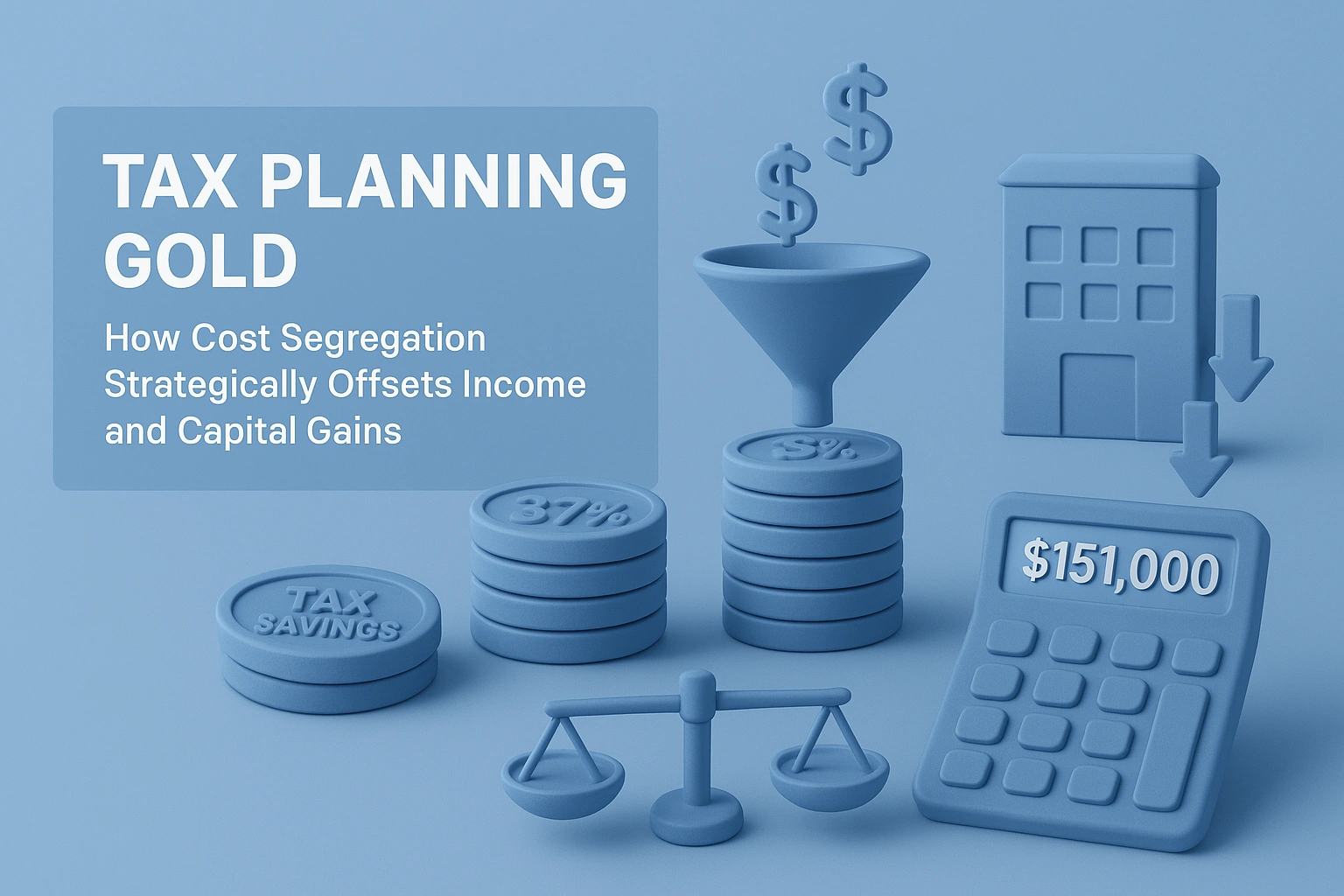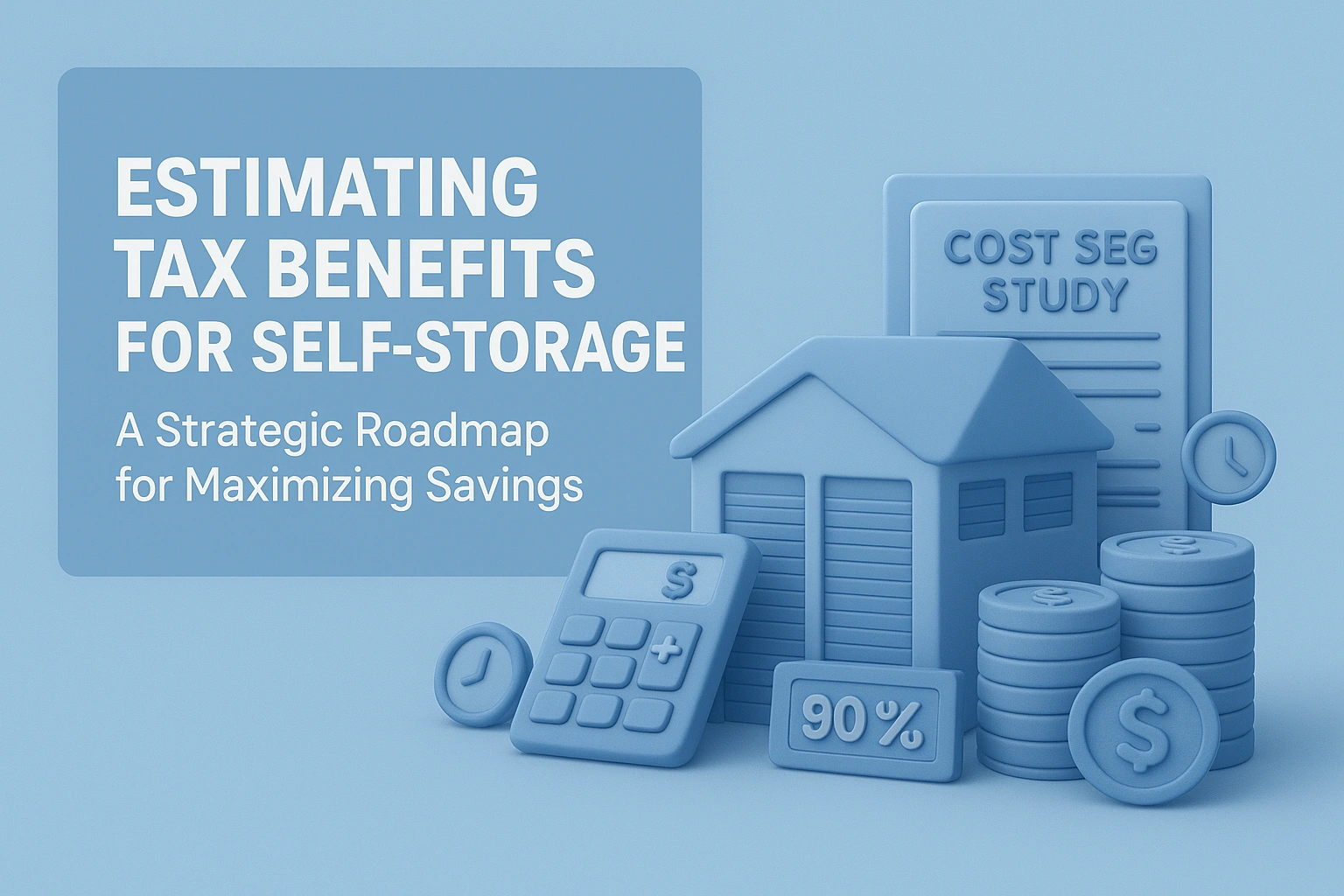When investors sell appreciated assets and simultaneously own depreciable real estate, a powerful tax planning opportunity emerges. Understanding exactly how depreciation deductions from a cost segregation study offset different types of income can save you tens or even hundreds of thousands in taxes.
Here’s the strategy most tax advisors miss: Depreciation from cost segregation studies offsets ordinary income first, then capital gains — creating a significant tax arbitrage opportunity.
The Hierarchy of Tax Offsets: What Gets Reduced First
For real estate investors, understanding the order of operations for tax deductions can be as valuable as finding the right property.
Question: If you have both ordinary income and capital gains in the same year, which does cost segregation depreciation offset first?
Answer: Ordinary income always gets offset first, then capital gains.
This creates a strategic planning opportunity that can dramatically reduce your effective tax rate when both types of income occur in the same year.
How It Works: A Real-World Example
Consider this scenario that many successful investors face:
- $300,000 in ordinary income (37% tax bracket)
- $600,000 in capital gains (20% tax bracket)
- $500,000 in potential depreciation from a cost segregation study
Without Cost Segregation
- Tax on $300,000 ordinary income (37%): $111,000
- Tax on $600,000 capital gains (20%): $120,000 Total tax: $231,000
With Cost Segregation
- Ordinary income reduced to $0 ($300,000 – $300,000 depreciation)
- Remaining $200,000 of depreciation offsets capital gains
- Taxable capital gains: $400,000 ($600,000 – $200,000)
- Tax on ordinary income: $0
- Tax on remaining capital gains (20%): $80,000
Total tax: $80,000 Tax savings: $151,000
This represents a 65% reduction in tax liability — far more impactful than if the depreciation had offset capital gains first.
The Strategic Decision: Use It All or Carry Forward?
While the example above shows using the full $500,000 of depreciation in the current year, there’s another strategic consideration: Should you use all the depreciation now, or save some for future years?
As noted by tax expert Mitchell Baldridge,
“They may not want to use it all and carry forward cost seg losses to next year.”
Your decision depends on:
- Income forecast: Will you have significant ordinary income next year?
- Tax rate expectations: Do you anticipate higher or lower tax rates in the future?
- Future capital transactions: Are you planning additional property sales that will generate capital gains?
The Math Behind the Strategy
The strategic value comes from the tax rate differential:
- Depreciation offsetting ordinary income saves 37¢ on the dollar
- Depreciation offsetting capital gains saves 20¢ on the dollar
This 17% differential creates the arbitrage opportunity. When you have both types of income, using depreciation to offset the highest-taxed income first maximizes your savings.
Implementation Considerations
To execute this strategy effectively:
- Timing Is Everything Coordinate the completion of your cost segregation study with the year you expect capital gains. This ensures accelerated depreciation provides maximum benefit.
- Consider Partial Depreciation Elections Under Rev. Proc. 2019-08, you can elect to take less than the maximum allowable depreciation in a given year. This allows you to “right-size” deductions to offset exactly the amount of ordinary income you have, saving the rest for future years.
- Plan Across Multiple Tax Years If you know you’ll have significant ordinary income in the next 2–3 years, creating a multi-year tax projection can help determine the optimal allocation of depreciation deductions.
- Be Mindful of Passive Activity Limitations Rental real estate is generally considered a passive activity. If your ordinary income comes from passive sources, remember the passive activity loss limitations under IRC §469.
Real Estate Professional Status: The Ultimate Enhancer
This strategy becomes even more powerful if you qualify as a Real Estate Professional under IRC §469(c)(7). With this status, real estate depreciation can offset all forms of income without passive activity limitations.
For high-income professionals who meet the Real Estate Professional requirements — 750+ hours and more than half of your work time in real estate — combining cost segregation with capital gains realization creates one of the most powerful tax planning strategies available.
Avoiding Common Mistakes
Be aware of these pitfalls when implementing this strategy:
- Alternative Minimum Tax (AMT): Large depreciation deductions can sometimes trigger AMT, reducing the net benefit.
- State Tax Considerations: Some states don’t follow federal depreciation rules.
- Recapture Exposure: Accelerated depreciation creates recapture exposure upon sale.
- Documentation Requirements: Ensure your cost segregation study is properly documented for potential IRS scrutiny.
The Bottom Line
When you have both ordinary income and capital gains in the same year, a cost segregation study can strategically offset your highest-taxed income first — creating significant tax savings beyond what most investors realize.
This strategy turns the tax code’s built-in hierarchy into a powerful planning tool that can reduce your effective tax rate far below what would otherwise be possible.
For investors facing significant capital gains, coordinating these gains with accelerated depreciation from cost segregation studies represents one of the most effective tax planning strategies available under current law.
Need help implementing this strategy for your specific situation? Contact R.E. Cost Seg for a personalized analysis of how cost segregation can optimize your tax position when dealing with mixed income types.






